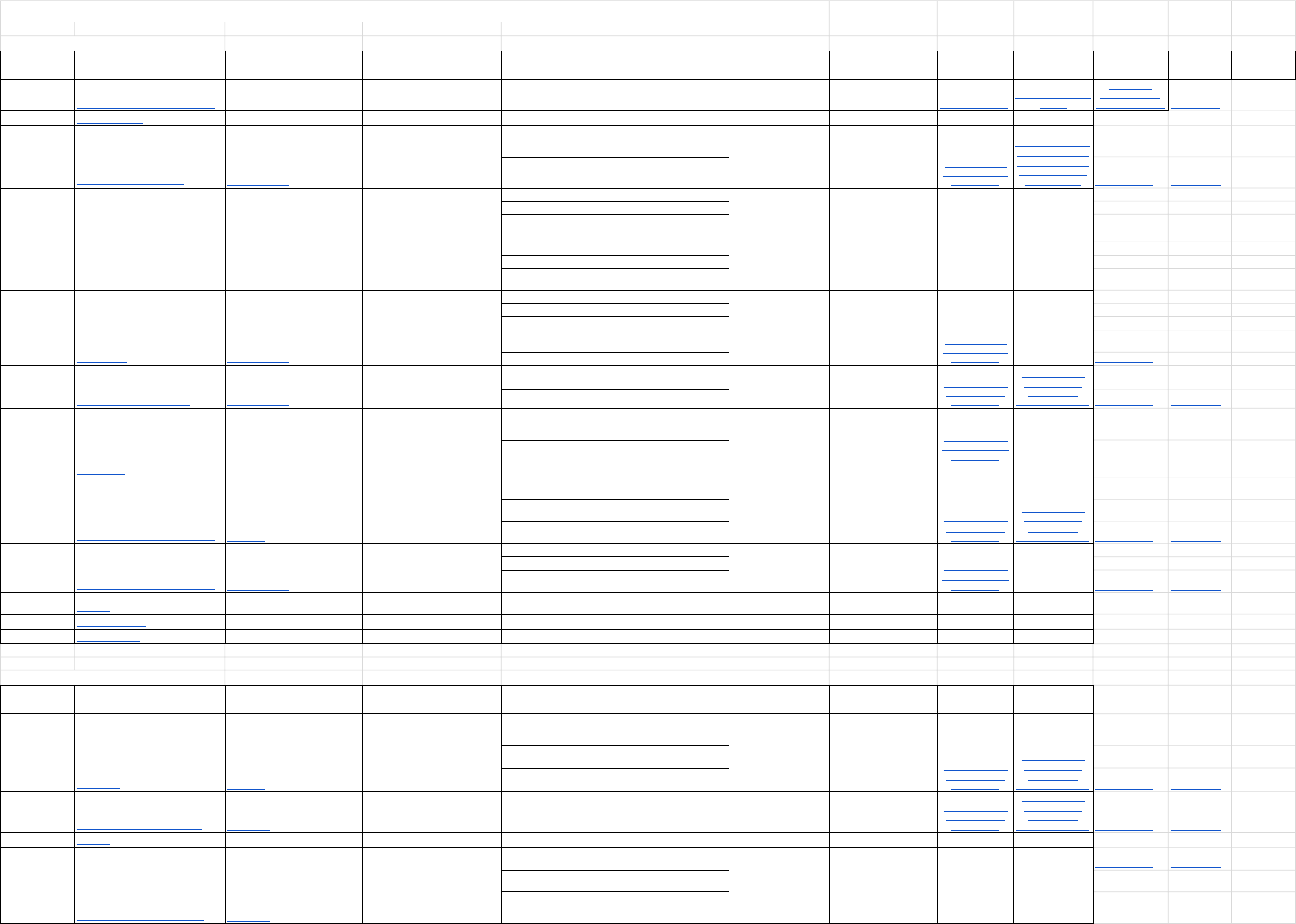
CED UNIT 1: EXPLORING ONE-VARIABLE DATA
Chapter 1: Data Analysis
Day Stats Medic
CED Topic
TPS Content Learning Targets Students will be able to …
Suggested Assignment
(MC bold)
Materials needed for in-
class Digital Resources Digital Resources Digital Resources
Digital
Resources
1
Can Joy Smell Parkinson's Disease?
Shirt Cards
Stats Medic applet
Bob Lochel Desmos
Activity
Bob Lochel
Desmos Activity
(v2) - slightly faster Google slides
2
Intros & Syllabus
Books
3
Displaying Categorical Data
TOPICS 1.1 - 1.4
Chapter 1 Introduction, Organizing
Data, From Data Analysis to
Inference
· Identify the individuals and variables in a set of data.
1, 3, 5, 7, 9, 10 None
One Categorical
Variable, Multiple
Group applet
Desmos activity with
introduction to data
and get to know you
(feel free to modify
for your school)
· Classify variables as categorical or quantitative.
Desmos Activity Google Slides
1.1 Displaying Categorical Data: Bar
Graphs and Pie Charts, Graphs: Good
and Bad, Analyzing Data on Two
Categorical Variables; 1.1
Relationships Between Two
Categorical Variables
· Make and interpret bar graphs for categorical data.
13, 15, 17, 19, 21, 23 None
· Identify what makes some graphs of categorical data misleading.
· Calculate marginal and joint relative frequencies from a two-way
table.
· Calculate conditional relative frequencies from a two-way table.
· Use bar graphs to compare distributions of categorical data.
· Describe the nature of the association between two categorical
variables.
4
Mosaic Plots
TOPICS 2.2 - 2.3
1.1 Mosaic Plots
· Classify variables as categorical or quantitative.
27, 29, 33, 35, 40–43
Modify lesson to include your
high school
One Categorical
Variable, Multiple
Group applet
· Make and interpret bar graphs for categorical data.
· Use bar graphs to compare distributions of categorical data.
· Describe the nature of the association between two categorical
variables.
Desmos Activity
5
Displaying Quantitative Data
TOPICS 1.5 - 1.6
1.2 Dotplots, Stemplots, Histograms,
Describing Shape
· Make and interpret dotplots, stemplots, and histograms of
quantitative data.
45, 49, 51, 59, 63 None
One Quantitative
Variable, Single
Group applet
One Quantitative
Variable, Single
Group applet
(COLLABORATIVE)
· Identify the shape of a distribution from a graph.
Desmos Activity Google Slides
1.2 Describing Distributions,
Comparing Distributions, Using
Histograms Wisely
· Describe the overall pattern (shape, center, and variability) of a
distribution and identify any major departures from the pattern
(outliers).
55, 65, 69, 77, 80–85 None
One Quantitative
Variable, Mulltiple
Group applet
· Compare distributions of quantitative data using dotplots,
stemplots, and histograms.
6
Quiz 1.1-1.2
7
Describing Quantitative Data Day 1
TOPIC 1.7
1.3 Measuring Center: Mean and
Median, Comparing the Mean and the
Median, Measuring Variability: Range,
Standard Deviation and IQR,
Numerical Summaries with
Technology
· Calculate measures of center (mean, median) for a distribution of
quantitative data.
87, 89, 91, 95, 97, 101,
103, 105, 121 None
One Quantitative
Variable, Single
Group applet
One Quantitative
Variable, Single
Group applet
(COLLABORATIVE)
· Calculate and interpret measures of variability (range, standard
deviation, IQR) for a distribution of quantitative data.
· Explain how outliers and skewness affect measures of center and
variability.
Desmos Activity Google Slides
8
Describing Quantitative Data Day 2
TOPICS 1.8 - 1.9
1.3 Identifying Outliers, Making and
Interpreting Boxplots, Comparing
Distributions with Boxplots
· Identify outliers using the 1.5×IQR rule.
109, 111, 113, 115, 123–
126
None
One Quantitative
Variable, Mulltiple
Group applet
· Make and interpret boxplots of quantitative data.
· Use boxplots and numerical summaries to compare
distributions of quantitative data. Desmos Activity Google Slides
9
Quiz 1.3
Chapter 1 Review
Exercises None
10
Chapter 1 Review
Chapter 1 Review Practice Test MC + FRAPPY! Study None
11
Chapter 1 Test
Chapter 1 Test
Chapter 2: Modeling Distributions of Data
Day Stats Medic
CED Topic
TPS Content Learning Targets Students will be able to …
Suggested Assignment
(MC bold)
Materials needed for in-
class
Resources for
teaching online
Resources for
teaching online
1
Percentiles
TOPIC 1.7
Chapter 2 Introduction, 2.1 Measuring
Location: Percentiles, Cumulative
Relative Frequency Graphs,
Measuring Location: Standardized
Scores
· Find and interpret the percentile of an individual value
within a distribution of data.
1, 3, 7, 9, 11, 13, 15, 19 None
One Quantitative
Variable, Single
Group applet
One Quantitative
Variable, Single
Group applet
(COLLABORATIVE)
· Estimate percentiles and individual values using a
cumulative relative frequency graph.
· Find and interpret the standardized score (z-score) of an
individual value within a distribution of data. Desmos Activity Google Slides
2
z-Scores and Transforming Data
TOPIC 1.10
2.1 Transforming Data
· Describe the effect of adding, subtracting, multiplying by, or
dividing by a constant on the shape, center, and variability of
a distribution of data.
21, 25, 29, 31, 33–38 None
One Quantitative
Variable, Single
Group applet
One Quantitative
Variable, Single
Group applet
(COLLABORATIVE) Desmos Activity Google Slides
3
Quiz 2.1
None
4
Density Curves, 68-95-99.7 Rule
TOPIC 1.10
2.2 Density Curves, Describing
Density Curves, Normal Distributions,
The Empirical Rule
· Use a density curve to model distributions of quantitative
data.
41, 45, 47, 49, 51
Dice, Pennies, Stop Watches,
Meter stick/Tape measure.
Copies of Normal Curve
flipbook (optional)
Desmos Activity Google Slides
· Identify the relative locations of the mean and median of a
distribution from a density curve.
· Use the empirical rule to estimate (i) the proportion of
values in a specified interval, or (ii) the value that
corresponds to a given percentile in a Normal distribution.

5
Normal Distribution Calculations
TOPIC 1.10
2.2 Finding Areas in a Normal
Distribution, Working Backward:
Finding Values from Areas
· Find the proportion of values in a specified interval in a
Normal distribution using Table A or technology.
53, 55, 57, 59, 61, 63 Table A or technology
Normal Density
Curve applet
· Find the value that corresponds to a given percentile in a
Normal distribution using Table A or technology. Desmos Activity Google Slides
6
Assessing Normality
TOPIC 1.10
2.2 Assessing Normality
· Determine whether a distribution of data is approximately
Normal from graphical and numerical evidence.
73, 75, 77, 79, 81, 85–90
Optional worskeet to be
modified to include your
names.
One Quantitative
Variable, Single
Group applet Desmos Activity
7
Quiz 2.2
Chapter 2 Review
Exercises None
8
Chapter 2 Review
Chapter 2 Review/FRAPPY! Study None
9
Chapter 2 Test
Chapter 2 Test
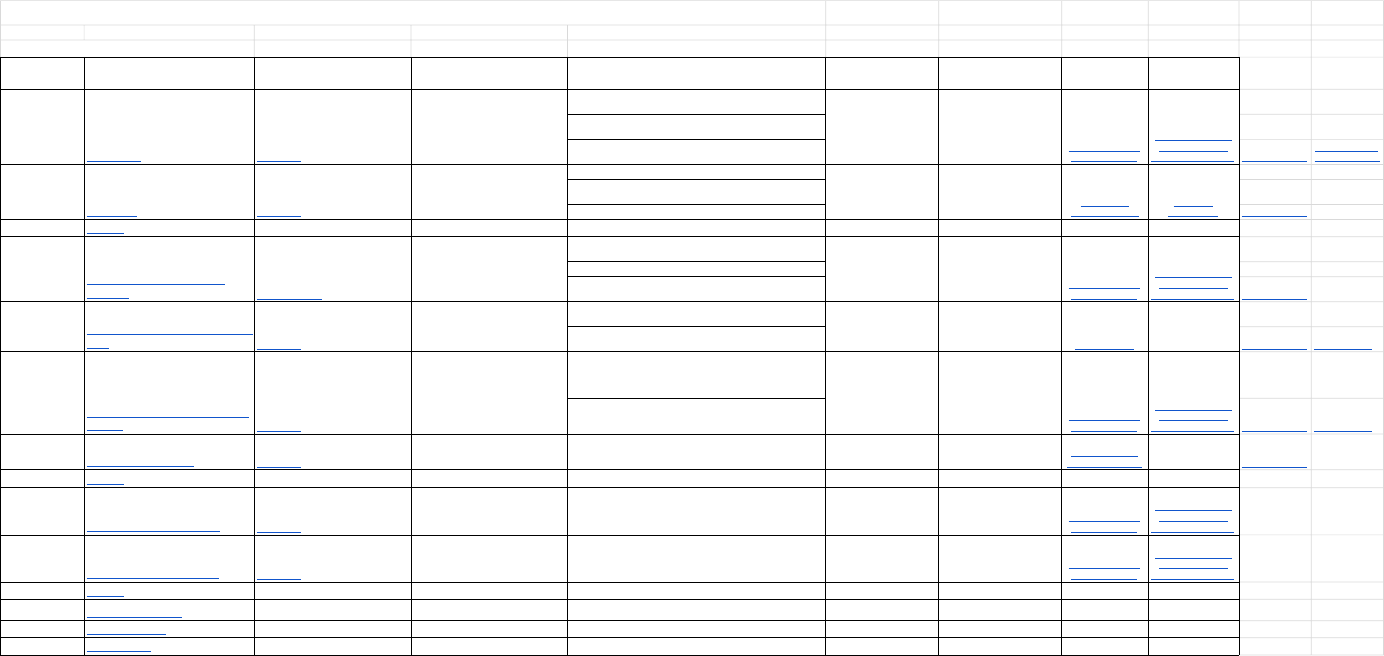
CED UNIT 2: EXPLORING TWO-VARIABLE DATA
Chapter 3: Describing Relationships
Day Stats Medic
CED Topic
TPS Content Learning Targets Students will be able to …
Suggested Assignment
(MC bold)
Materials needed for in-
class Digital Resources Digital Resources
1
Scatterplots
TOPIC 2.4
Chapter 3 Introduction, 3.1
Explanatory and Response Variables,
Displaying Relationships:
Scatterplots, Describing a Scatterplot
· Distinguish between explanatory and response variables
for quantitative data.
1, 3, 5, 9, 11 Barbies, Rubber Bands
Two Quantitative
Variables applet
Two Quantitatibve
Variables applet
(COLLABORATIVE)
· Make a scatterplot to display the relationship between two
quantitative variables.
· Describe the direction, form, and strength of a relationship
displayed in a scatterplot and identify unusual features. Desmos Activity
Leaving Part 1-
3 Google Slides
2
Correlation
TOPIC 2.5
3.1 Measuring Linear Association:
Correlation, Cautions about
Correlation, Calculating Correlation,
Additional Facts about Correlation
· Interpret the correlation.
13, 15, 17, 19, 23, 29–34
None
Correlation
Guessing Game
Spurious
Correlations
· Understand the basic properties of correlation, including
how the correlation is influenced by unusual points.
· Distinguish correlation from causation. Desmos Activity
3
Quiz 3.1
4
Regression Line, Predictions &
Residuals
TOPIC 2.6 - 2.8
3.2 Prediction, Residuals, Interpreting
a Regression Line
· Make predictions using regression lines, keeping in mind
the dangers of extrapolation.
37, 39, 41, 43, 45
None
Two Quantitative
Variables applet
Two Quantitatibve
Variables applet
(COLLABORATIVE)
· Calculate and interpret a residual.
· Interpret the slope and y intercept of a least-squares
regression line. Desmos Activity
5
Least Squares Regression & Residual
Plots
TOPIC 2.7
3.2 The Least-Squares Regression
Line, Determining if a Linear Model is
Appropriate: Residual Plots
· Determine the equation of a least-squares regression line
using technology or computer output.
47, 49, 51, 53
None Desmos eTool
· Construct and interpret residual plots to assess whether a
regression model is appropriate. Desmos Activity Google Slides
6
Standard Deviation of Residuals & r-
squared
TOPIC 2.8
3.2 How Well the Line Fits the Data:
The Role of s and r2 in Regression,
Interpreting Computer Regression
Output
· Interpret the standard deviation of the residuals and r-sq
and use these values to assess how well a least-squares
regression line models the relationship between two
variables.
55, 57, 59, 67
None
Two Quantitative
Variables applet
Two Quantitatibve
Variables applet
(COLLABORATIVE)
· Describe how the least-squares regression line, standard
deviation of the residuals, and r-sq are influenced by unusual
points. Desmos Activity Google Slides
7
Outliers for Scatterplots
TOPIC 2.9
3.2 Regression to the Mean,
Correlation and Regression Wisdom
· Find the slope and y intercept of the least-squares
regression line from the means and standard deviations of x
and y and their correlation.
63, 65, 71–78
None
Correlation and
Regression applet Desmos Activity
8
Quiz 3.2
9
Transforming Non-linear Data
TOPIC 2.9
3.3 Transforming with Powers and
Roots; Transforming with
Logarithms: Power Models
· Use transformations involving powers, roots, or logarithms to
create a linear model that describes the relationship between
two quantitative variables, and use the model to make
predictions.
81, 83, 85, 87
None
Two Quantitative
Variables applet
Two Quantitatibve
Variables applet
(COLLABORATIVE)
10
Choosing the Best Regression
TOPIC 2.9
3.3 Transforming with Logarithms:
Exponential Models; Putting it all
Together: Which Transformation
Should We Choose?
· Determine which of several models does a better job of
describing the relationship between two quantitative variables.
89, 91, 93, 95-96
Pull back cars
Two Quantitative
Variables applet
Two Quantitatibve
Variables applet
(COLLABORATIVE)
11
Quiz 3.3
None
12
Barbie Bungee Finale
Chapter 3 Review
Exercises
None
13
Chapter 3 Review
Chapter 3 Review/FRAPPY!
Study
14
Chapter 3 Test
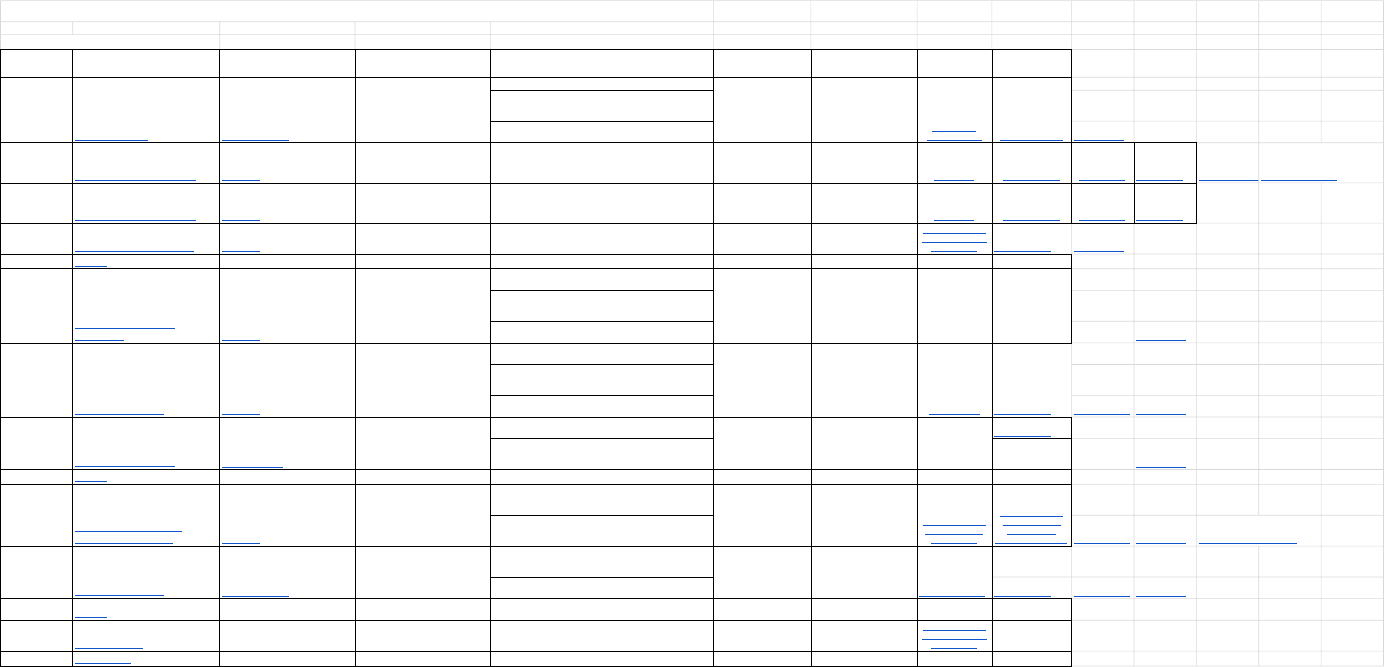
CED UNIT 3: COLLECTING DATA
Chapter 4: Collecting Data
Day Stats Medic
CED Topic
TPS Content Learning Targets Students will be able to …
Suggested Assignment
(MC bold)
Materials needed for in-
class Digital Resources Digital Resources
1
Sampling Methods
TOPIC 3.1 and 3.4
Chapter 4 Introduction, 4.1 The Idea
of a Sample Survey, How to Sample
Badly, How to Sample Well: Random
Sampling
· Identify the population and sample in a statistical study.
1, 3, 5, 7, 11, 13
Crazy in Love lyrics, poster
paper, dot stickers
Stats Medic
Beyonce applet Beyonce Desmos
· Identify voluntary response sampling and convenience
sampling and explain how these sampling methods can lead
to bias.
· Describe how to select a simple random sample using slips
of paper, technology, or a table of random digits. Google Slides
2
More Sampling Methods Day 1
TOPIC 3.3
4.1 Other Random Sampling Methods
· Describe how to select a sample using stratified random
sampling, cluster sampling, and systematic random
sampling, and explain whether a particular sampling method
is appropriate in a given situation.
15, 17, 19, 21, 22, 23 Poster paper, dot stickers
JT applet 1 Beginning Song Ending Song Desmos JT 1
Desmos Activity #1
Desmos Activity CED
3
More Sampling Methods Day 2
TOPIC 3.3
4.1 Other Random Sampling Methods
· Describe how to select a sample using stratified random
sampling, cluster sampling, and systematic random
sampling, and explain whether a particular sampling method
is appropriate in a given situation.
Poster paper, dot stickers
JT applet 2 Beginning Song Ending Song Desmos JT 2
4
Problems with Sample Surveys
TOPIC 3.4
4.1 Sample Surveys: What Else Can Go
Wrong?
· Explain how undercoverage, nonresponse, question
wording, and other aspects of a sample survey can lead to
bias.
25, 27, 29, 31, 33, 35–40 Poster paper, dot stickers
One Quantitative
Variable, Mulltiple
Group applet Desmos Activity Google Slides
5
Quiz 4.1
6
Observational Studies vs.
Experiments
TOPIC 3.2
4.2 Observational Studies Versus
Experiments, The Language of
Experiments
· Explain the concept of confounding and how it limits the
ability to make cause-and-effect conclusions.
43, 45, 47, 49, 51, 53 None
· Distinguish between an observational study and an
experiment, and identify the explanatory and response
variables in each type of study.
· Identify the experimental units and treatments in an
experiment. Google Slides
7
Designing Experiments
TOPIC 3.5
4.2 Designing Experiments: Blinding
and the Placebo Effect, Random
Assignment, Comparison, Control,
Replication, and Putting It All
Together; Completely Randomized
Designs
· Describe the placebo effect and the purpose of blinding in
an experiment.
55, 57, 59, 61, 63, 65, 67,
69 None
Leading Video Desmos Activity
· Describe how to randomly assign treatments in an
experiment using slips of paper, technology, or a table of
random digits.
· Explain the purpose of comparison, random assignment,
control, and replication in an experiment. Desmos Activity Google Slides
8
Randomized Block Design
TOPICS 3.5 - 3.6
4.2 Randomized Block Designs
· Describe a completely randomized design for an
experiment.
71, 75, 77, 79, 83–90 None
Desmos Activity
· Describe a randomized block design and a matched pairs
design for an experiment and explain the purpose of blocking
in an experiment. Google Slides
9
Quiz 4.2
10
Inference for Sampling and
Inference of Experiments
TOPIC 3.7
4.3 Inference for Sampling, Inference
for Experiments
· Explain the concept of sampling variability when making an
inference about a population and how sample size affects
sampling variability.
93, 95, 97, 99 20 Index Cards
One Quantitative
Variable, Single
Group applet
One Quantitative
Variable, Single
Group applet
(COLLABORATIVE)
· Explain the meaning of statistically significant in the context
of an experiment and use simulation to determine if the
results of an experiment are statistically significant. Desmos Activity Google Slides Desmos for SM/STS Collab
11
The Scope of Inference
TOPIC 3.2 and 3.7
4.3 The Scope of Inference: Putting it
All Together, The Challenges of
Establishing Causation, Data Ethics
(optional)
· Identify when it is appropriate to make an inference about a
population and when it is appropriate to make an inference
about cause and effect.
103, 105, 107, 117–118
(109, 111, 113, 115
optional) None
Desmos Card Sort
· Evaluate if a statistical study has been carried out in an
ethical manner. Desmos Activity Desmos Activity Google Slides
12
Quiz 4.3
Chapter 4 Review
Exercises
13
Chapter 4 Review
Chapter 4 Review/FRAPPY!
Study
Coke, Caffeine Free Coke, 3 oz
cups
One Quantitative
Variable, Mulltiple
Group applet
14
Chapter 4 Test
Chapter 4 Test
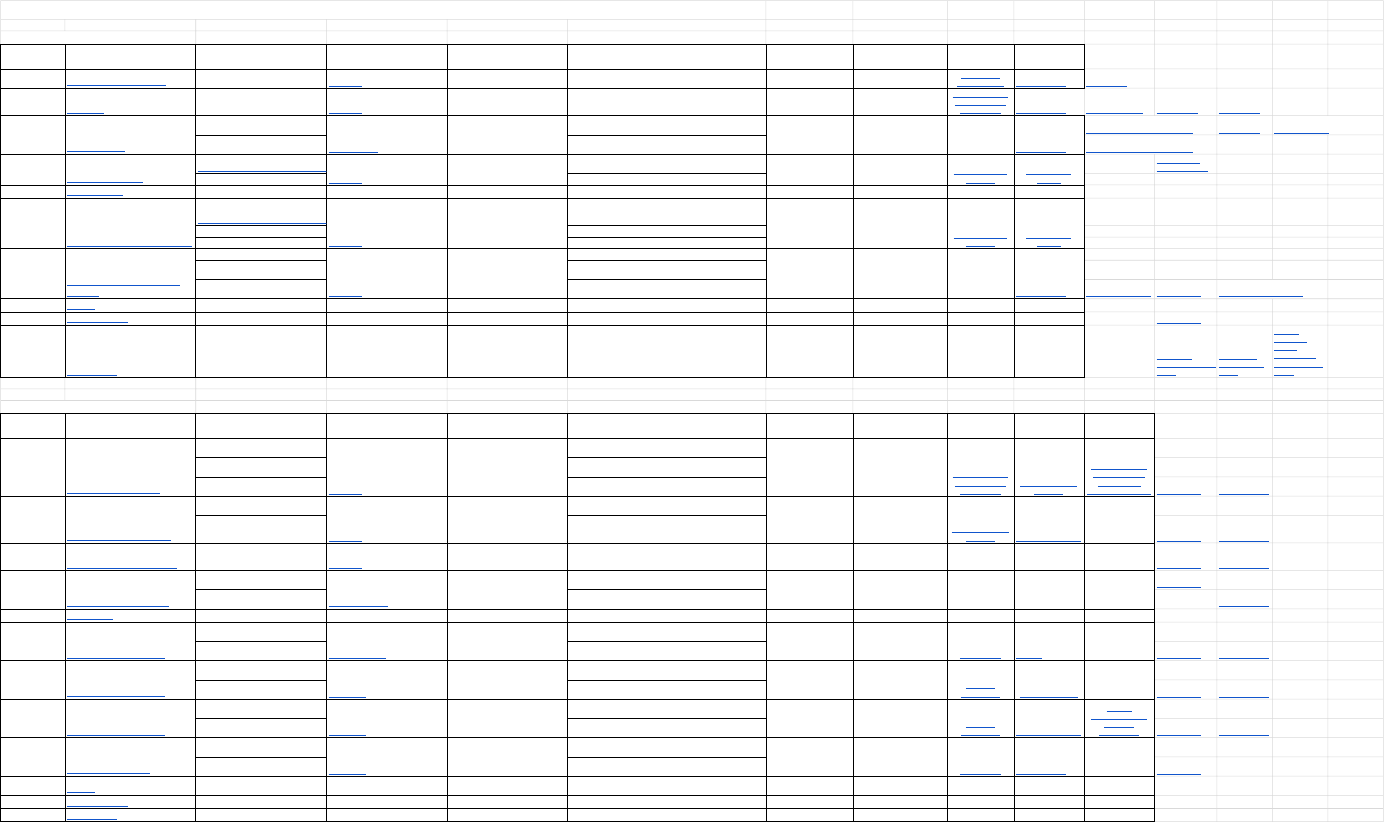
CED UNIT 4: PROBABILITY, RANDOM VARIABLES, AND PROBABILITY DISTRIBUTIONS
Chapter 5: Probability
Day Stats Medic
CED Topic
TPS Content Learning Targets Students will be able to …
Suggested Assignment
(MC bold)
Materials needed for in-
class Digital Resources Digital Resources
1
Randomness and Probability
TOPIC 4.3
Chapter 5 Introduction, 5.1 The Idea
of Probability
· Interpret probability as a long-run relative frequency.
1, 3, 5, 7 None
Free Throw
Shooter applet Desmos Activity Google Slide
2
Simulation
TOPIC 4.2
5.1 Simulation
· Use simulation to model a random process.
9, 11, 15, 21, 23–28 Die, poster paper, dot stickers
One Quantitative
Variable, Single
Group applet Desmos Activity Desmos Activity 2 Google Slide Soda Activity
3
Probability Rules
TOPIC 4.3 - 4.5
5.2 Probability Models, Basic
Probability Rules
· Give a probability model for a random process with equally
likely outcomes and use it to find the probability of an event.
31, 33, 35, 37, 39 Pair of Dice
Desmos Activity
Desmos Activity The Last Banana Google Slide The Last Banana
· Use basic probability rules, including the complement rule
and the addition rule for mutually exclusive events. Desmos Activity The Last Banana
4
General Addition Rule
Combine content from "General Addition Rule" lesson blog post and also the Taco Tongue blog post.
TOPIC 4.6
5.2 Two-Way Tables, Probability, and
the General Addition Rule, Venn
Diagrams and Probability
· Use a two-way table or Venn diagram to model a random
process and calculate probabilities involving two events.
41, 47, 49, 51, 53, 55–58 None
Two Categorical
Variables
Desmos Taco
Tongue
Google Slide
(Part 1 & Part 2)
· Apply the general addition rule to calculate probabilities.
5
Quiz 5.1 and 5.2
6
Independent and Dependent Events
Combine content from "Independent and Dependent Events" lesson blog post and also the Taco Tongue blog post.
TOPIC 4.6
5.3 What Is Conditional Probability?,
Conditional Probability and
Independence, The General
Multiplication Rule
· Use a two-way table or Venn diagram to model a random
process and calculate probabilities involving two events (from
Lesson 5.2).
61, 63, 65, 67, 69, 71, 77,
79 None
Two Categorical
Variables
Desmos Taco
Tongue
· Calculate and interpret conditional probabilities.
· Determine whether two events are independent.
7
Conditional Probability and Tree
Diagrams
TOPIC 4.5
5.3 Tree Diagrams and Conditional
Probability, The Multiplication Rule
for Independent Events
· Use the general multiplication rule to calculate probabilities.
81, 83, 87, 89, 91, 93, 99,
103–106 5 cards
Desmos Activity
· Use a tree diagram to model a random process involving a
sequence of outcomes and to calculate probabilities.
· When appropriate, use the multiplication rule for
independent events to calculate probabilities. GeoGebra simulator Google Slides Code created by a student
8
Quiz 5.3
Chapter 5 Review Exercises
9
Chapter 5 Review
Chapter 5 Review/FRAPPY! Study None
Google Slides
10
Chapter 5 Test
Chapter 5 Test
Probability
Strategies Google
Slides
"Or" versus
"And" Google
Slides
Mutally
Exclusive
versus
Independent
Events Google
Slides
Chapter 6: Random Variables
Day Stats Medic
CED Topic
TPS Content Learning Targets Students will be able to …
Suggested Assignment
(MC bold)
Materials needed for in-
class
Resources for
teaching online
Resources for
teaching online
Resources for
teaching online
1
Discrete Random Variables
TOPIC 4.8
Chapter 6 Introduction, 6.1 Discrete
Random Variables, Analyzing Discrete
Random Variables: Describing Shape,
Measuring Center: The Mean
(Expected Value) of a Discrete
Random Variable
· Use the probability distribution of a discrete random
variable to calculate the probability of an event.
1, 3, 5, 7, 9, 11 None
One Quantitative
Variable, Single
Group applet
Discrete Random
Variables
One Quantitative
Variable, Single
Group applet
(COLLABORATIVE)
· Make a histogram to display the probability distribution of a
discrete random variable and describe its shape.
· Calculate and interpret the mean (expected value) of a
discrete random variable. Google Slides Desmos Activity
2
Continuous Random Variables
TOPIC 4.8
6.1 Measuring Variability: The
Standard Deviation (and Variance) of
a Discrete Random Variable,
Continuous Random Variables
· Calculate and interpret the standard deviation of a discrete
random variable.
13, 19, 21, 23, 27, 29, 31–
34 Wage Cards
Discrete Random
Variables Normal Distributions
· Use the probability distribution of a continuous random
variable (uniform or Normal) to calculate the probability of an
event. Google Slides Desmos Activity
3
Transforming Random Variables
TOPIC 4.9
6.2 Transforming a Random Variable
· Describe the effect of adding or subtracting a constant or
multiplying or dividing by a constant on the probability
distribution of a random variable.
37, 39, 41, 43, 47
Google Slides Desmos Activity
4
Combining Random Variables
TOPIC 4.9 and 5.2
6.2 Combining Random Variables,
Standard Deviation of the Sum or
Difference of Two Random Variables,
Combining Normal Random Variables
· Calculate the mean and standard deviation of the sum or
difference of random variables
49, 51, 55, 57, 59, 65, 67,
73–74
Google Slides
· Find probabilities involving the sum or difference of
independent Normal random variables. Desmos Activity
5
Quiz 6.1 - 6.2
6
Binomial Distributions Day 1
TOPIC 4.10 - 4.11
6.3 Binomial Settings and Binomial
Random Variables, Calculating
Binomial Probabilities
· Determine whether the conditions for a binomial setting are
met.
77, 79, 81, 83, 85, 89
YouTube clip Desmos
· Calculate and interpret probabilities involving binomial
distributions. Google Slides Desmos Activity
7
Binomial Distributions Day 2
TOPIC 4.11
6.3 Describing a Binomial
Distribution: Shape, Center, and
Variability
· Determine whether the conditions for a binomial setting are
met.
91, 93, 95, 99, 101, 103,
105, 106, 117
Binomial
Distributions Counting Methods
· Calculate the mean and standard deviation of a binomial
random variable. Interpret these values. Google Slides Desmos Activity
8
Binomial Distributions Day 3
TOPIC 4.11
6.3 Binomial Distributions in
Statistical Sampling, The Normal
Approximation to Binomial
Distributions
· Calculate and interpret probabilities involving binomial
distributions.
Skittles
Binomial
Distributions Normal Distributions
Normal
Approximation to
Binomial
Distributions
· When appropriate, use the Normal approximation to the
binomial distribution to calculate probabilities. Google Slides Desmos Activity
9
Geometric Distributions
TOPIC 4.12
6.3 Geometric Random Variables
· Calculate and interpret probabilities involving geometric
random variables.
107, 109, 111, 113, 115–
119 Water bottles, die
YouTube clip Desmos Activity
· Calculate the mean and standard deviation of a geometric
distribution. Interpret these values. Google Slides
10
Quiz 6.3
Chapter 6 Review
Exercises
11
Chapter 6 Review
Chapter 6 Review/FRAPPY! Study
12
Chapter 6 Test
Chapter 6 Test
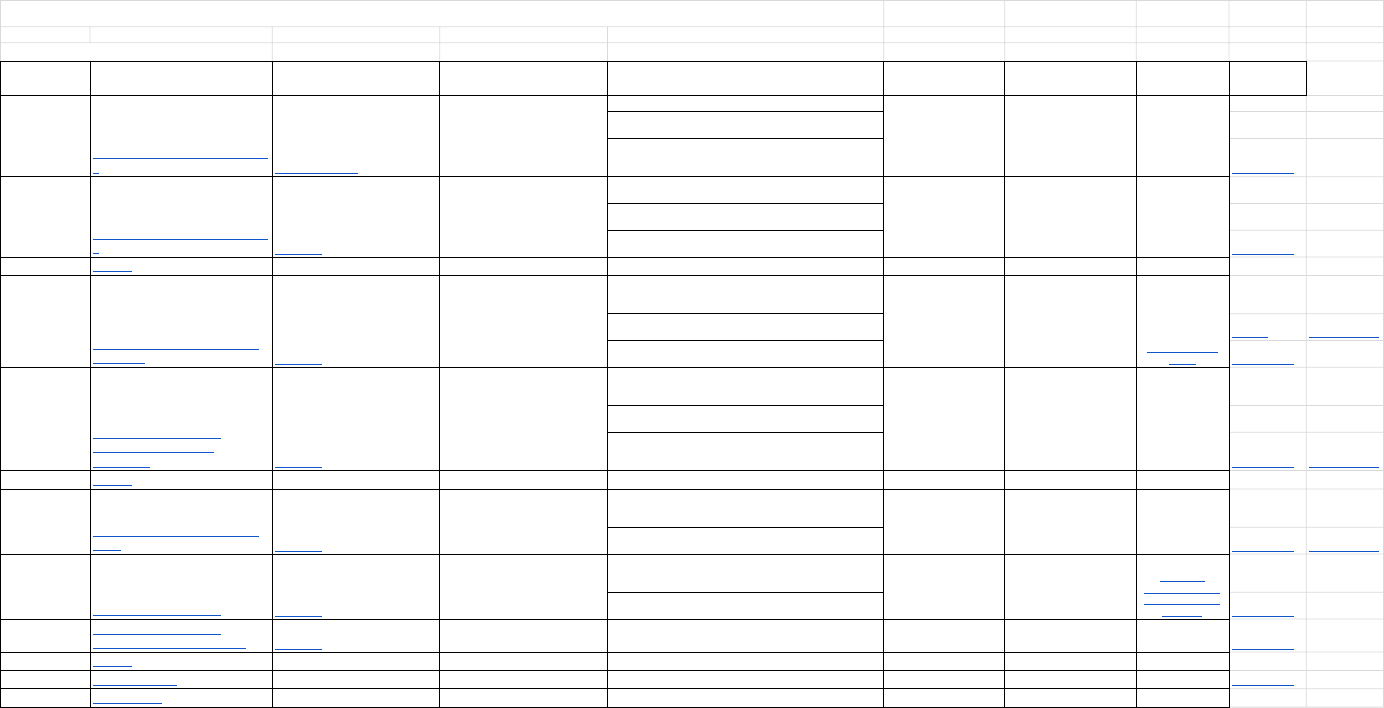
CED UNIT 5: SAMPLING DISTRIBUTIONS
Chapter 7: Sampling Distributions
Day Stats Medic
CED Topic
TPS Content Learning Targets Students will be able to …
Suggested Assignment
(MC bold)
Materials needed for in-
class Digital Resources
Digital
Resources
1
What is a Sampling Distribution Day
1
TOPIC 5.1 and 5.4
Chapter 7 Introduction, 7.1
Parameters and Statistics, The Idea of
a Sampling Distribution
· Distinguish between a parameter and a statistic.
1, 3, 5, 7, 9
· Create a sampling distribution using all possible samples
from a small population.
· Distinguish among the distribution of a population, the
distribution of a sample, and the sampling distribution of a
statistic. Google Slides
2
What is a Sampling Distribution Day
2
TOPIC 5.4
7.1 The Idea of a Sampling
Distribution, Describing Sampling
Distributions
· Use the sampling distribution of a statistic to evaluate a
claim about a parameter.
11, 13, 15, 19, 21, 25, 26–
30
Ch 6 test scores cards, poster
paper, dot stickers
· Determine if a statistic is an unbiased estimator of a
population parameter.
· Describe the relationship between sample size and the
variability of a statistic. Google Slides
3
Quiz 7.1
4
Sampling Distribution of a Sample
Proportion
TOPIC 5.5
7.2 The Sampling Distribution of p-
hat , Using the Normal Approximation
for p-hat
· Calculate the mean and standard deviation of the sampling
distribution of a sample proportion and interpret the standard
deviation.
35, 37, 41, 43 Reese's pieces
Reese's Pieces
applet
· Determine if the sampling distribution of a sample
proportion is approximately Normal. Desmos Desmos Activity
· If appropriate, use a Normal distribution to calculate
probabilities involving a sample proportion. Google Slides
5
Sampling Distribution of a
Difference between Two
Proportions
TOPIC 5.6
7.2 The Sampling Distribution of a
Difference Between Two Proportions
· Calculate the mean and the standard deviation of the
sampling distribution of a difference between sample
proportions, and interpret the standard deviation.
49, 51, 53–56 Skittles & MMs
· Determine if the sampling distribution of a difference
between sample proportions is approximately Normal.
· If appropriate, use a Normal distribution to calculate
probabilities involving a sample proportion or of a difference
between sample proportions. Google Slides Desmos Activity
6
Quiz 7.2
7
Sampling Distribution of a Sample
Mean
TOPIC 5.7
7.3 The Sampling Distribution of x-
bar, Sampling from a Normal
Population, The Central Limit
Theorem
· Calculate the mean and standard deviation of the sampling
distribution of a sample mean and interpret the standard
deviation.
59, 61, 63, 65, 69, 71, 73 Height Data Handout
· If appropriate, use a Normal distribution to calculate
probabilities involving sample means. Google Slides Desmos Activity
8
The Central Limit Theorem
TOPIC 5.3
7.3 The Sampling Distribution of a
Difference Between Two Means
· Explain how the shape of the sampling distribution of a
sample mean is affected by the shape of the population
distribution and the sample size.
75, 77, 83, 85, 87–90
Sampling
Distributions and
the Central Limit
Theorem
· If appropriate, use a Normal distribution to calculate
probabilities involving sample means. Google Slides
9
Sampling Distribution of a
Difference between Two Means
TOPIC 5.8
7.3 The Sampling Distribution of a
Difference Between Two Means
Google Slides
10
Quiz 7.3
Chapter 7 Review Exercises
11
Chapter 7 Review
Chapter 7 Review/FRAPPY! Study
Google Slides
12
Chapter 7 Test
Chapter 7 Test
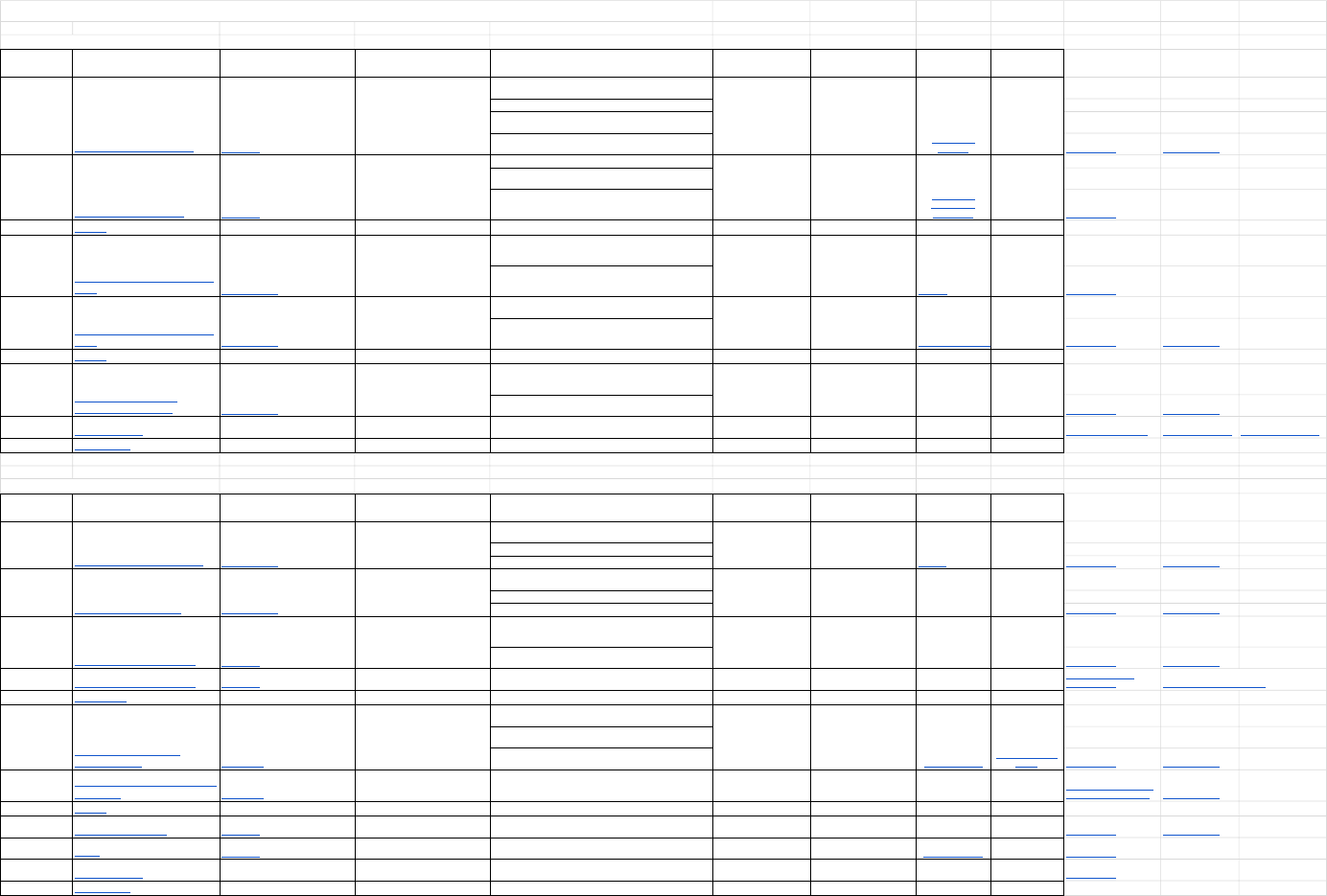
CED UNIT 6: INFERENCE FOR CATEGORICAL DATA: PROPORTIONS
Chapter 8: Estimating Proportions with Confidence
Day Stats Medic
CED Topic
TPS Content Learning Targets Students will be able to …
Suggested Assignment
(MC bold)
Materials needed for in-
class Digital Resources Digital Resources
1
What is a Confidence Interval?
TOPIC 6.2
Chapter 8 Introduction, 8.1 The Idea
of a Confidence Interval
· Identify an appropriate point estimator and calculate the
value of a point estimate.
1, 3, 5, 7, 9 Jar of beads
Confidence
Intervals
· Interpret a confidence interval in context.
· Determine the point estimate and margin of error from a
confidence interval.
· Use a confidence interval to make a decision about the
value of a parameter. Google Slides Desmos Activity
2
What is a Confidence Level?
TOPIC 6.3
8.1 Interpreting Confidence Level,
What Affects the Margin of Error?
· Interpret a confidence level in context.
11, 15, 17, 19, 21, 23-26
Confidence
Intervals for
Proportions
· Describe how the sample size and confidence level affect
the margin of error.
· Explain how practical issues like nonresponse,
undercoverage, and response bias can affect the
interpretation of a confidence interval. Google Slides
3
Quiz 8.1
4
Estimating a Population Proportion
Day 1
TOPIC 6.2 - 6.3
8.2 Constructing a Confidence
Interval for p
· State and check the Random, 10%, and Large Counts
conditions for constructing a confidence interval for a
population proportion.
29, 31, 35, 37, 39 Hershey Kisses
Desmos
· Determine the critical value for calculating a C%
confidence interval for a population proportion using a table
or technology. Google Slides
5
Estimating a Population Proportion
Day 2
TOPIC 6.2 - 6.3
8.2 Putting It All Together: The Four-
Step Process, Choosing the Sample
Size
· Construct and interpret a confidence interval for a
population proportion.
41, 45, 49, 55-58 Earth globes
Random Geographic Coordinates
· Determine the sample size required to obtain a C%
confidence interval for a population proportion with a
specified margin of error. Google Slides Desmos Activity
6
Quiz 8.2
7
Confidence Intervals for a
Difference in Proportions
TOPIC 6.8 - 6.9
8.3 Confidence Intervals for a
Difference in Proportions, Putting It
All Together: Two-Sample z Interval
for a Difference in Proportions
· Determine whether the conditions are met for constructing
a confidence interval about a difference between two
proportions.
61, 65, 67, 71, 73-75
· Construct and interpret a confidence interval for a
difference between two proportions. Google Slides Desmos Activity
8
Chapter 8 Review
Chapter 8 Review/FRAPPY!
Chapter 7 Review
Exercises Big Ideas, Formula sheet
Formula Review Slides Sample Size Slides 4 Step Process Slides
9
Chapter 8 Test
Chapter 8 Test
Chapter 9: Testing Claims about Proportions
Day Stats Medic
CED Topic
TPS Content Learning Targets Students will be able to …
Suggested Assignment
(MC bold)
Materials needed for in-
class
Resources for
teaching online
Resources for
teaching online
1
Introduction to Significance Tests
TOPIC 6.4 - 6.5
Chapter 9 Introduction, 9.1 Intro to
Hypotheses, P-values, and
Conclusions
· State appropriate hypotheses for a significance test about
a population parameter.
1, 3, 5, 7, 9, 13, 14, 15, 19
Die, Spinner, Poster paper,
Dot Stickers
Spinner
· Interpret a P-value in context.
· Make an appropriate conclusion for a significance test. Google Slides Desmos Activity
2
What is a Significance Test?
TOPIC 6.4 - 6.5
Chapter 9 Introduction, 9.1 Stating
Hypotheses, Interpreting P-values,
Making Conclusions
· State appropriate hypotheses for a significance test about
a population parameter.
Optional: dice, spinners
· Interpret a P-value in context.
· Make an appropriate conclusion for a significance test. Google Slides Desmos Activity
3
Tests About a Proportion Day 1
TOPIC 6.6
9.2 Performing a Significance Test
about p
· State and check the Random, 10%, and Large Counts
conditions for performing a significance test about a
population proportion.
35, 37, 39, 41
· Calculate the standardized test statistic and P-value for a
test about a population proportion. Google Slides Desmos Activity
4
Tests About a Proportion Day 2
TOPIC 6.6
9.2 Putting It All Together: One-
Sample z Test for p, Two-Sided Tests
· Perform a significance test about a population proportion.
43, 45, 47, 51, 53, 55 Skittles
Testing Flint Water
Google Slides Desmos Activity (Flint Water)
5
Quiz 9.1 - 9.2
6
Tests about a Difference in
Proportions Intro
TOPIC 6.10
9.3 Significance Tests for a Difference
in Proportions
· State appropriate hypotheses for a significance test about
a difference between two proportions.
77, 79, 83, 85 Yawning Template cards
MythBusters clip
Yawn Simulation
applet
· Determine whether the conditions are met for performing a
test about a difference between two proportions.
· Calculate the standardized test statistic and P-value for a
test about a difference between two proportions. Google Slides Desmos Activity
7
Significance Tests for a Difference in
Proportions
TOPIC 6.11
9.3 Putting It All Together: Two-
sample z Test for a Difference in
Proportions
· Perform a significance test about a difference between two
proportions.
87, 89, 93, 95-98
Who is more likely to go
to prom? Google Slides Desmos Activity
8
Quiz 9.3
9
Type 1 and Type 2 Error
TOPIC 6.7
9.1 Type I and Type II Errors
· Interpret a Type I and a Type II error in context. Give a
consequence of each error in a given setting.
21, 23, 25, 27, 29-32
Google Slides Desmos Activity
10
Power
TOPIC 6.7
9.2 The Power of a Test
· Interpret the power of a significance test and describe what
factors affect the power of a test.
59, 61, 63, 65, 67, 70-73
Statistical Power Google Slides
11
Chapter 9 Review
Chapter 9 Review/FRAPPY!
Chapter 9 Review
Exercises
Google Slides
12
Chapter 9 Test
Chapter 9 Test
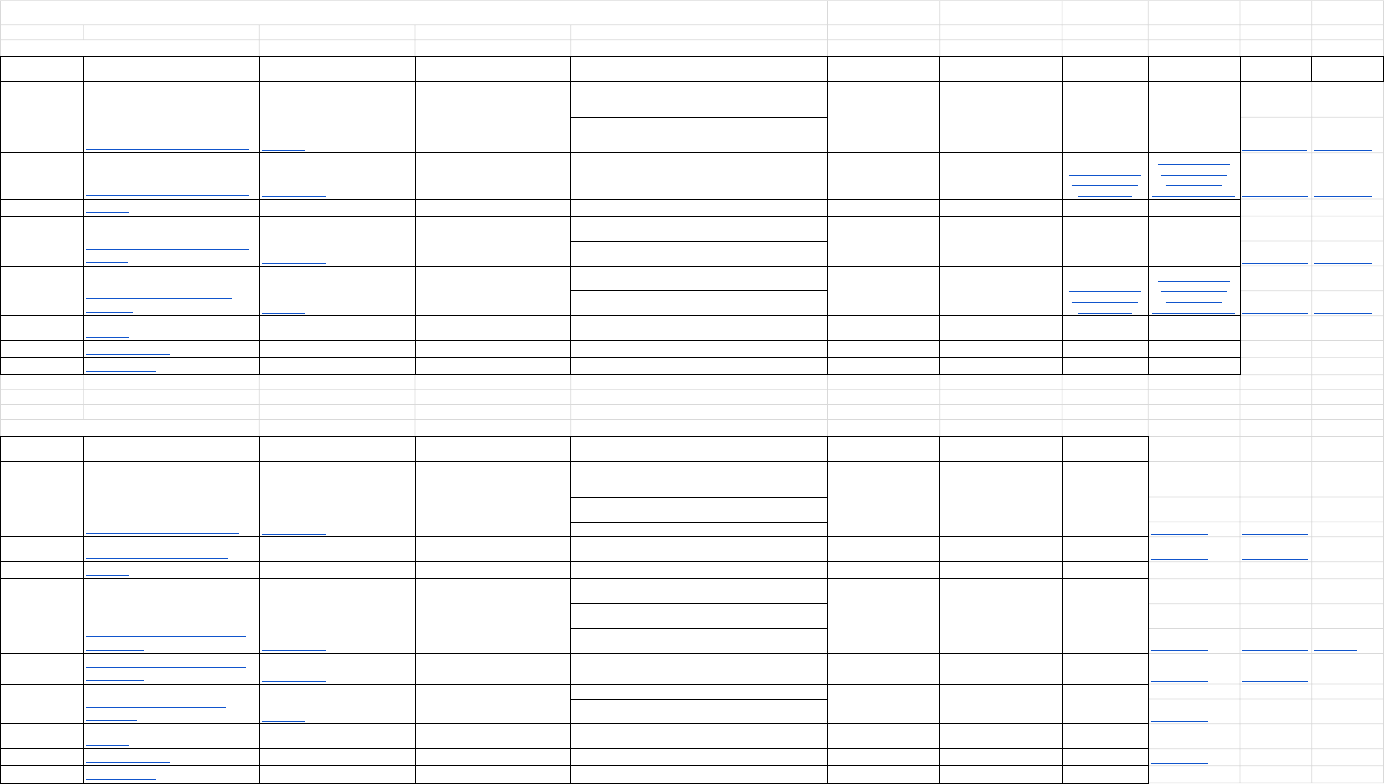
CED UNIT 7: INFERENCE FOR QUANTITATIVE DATA: MEANS
Chapter 10: Estimating Means with Confidence
Day Stats Medic
CED Topic
TPS Content Learning Targets Students will be able to …
Suggested Assignment
(MC bold)
Materials needed for in-
class Digital Resources Digital Resources
Digital
Resources
Digital
Resources
1
Estimating a Population Mean Day 1
TOPIC 7.2
10.1 The Problem of Unknown σ,
Conditions for Estimating μ
· Determine the critical value for calculating a C%
confidence interval for a population mean using a table or
technology.
1, 3, 5, 7 Oreos
· State and check the Random, 10%, and Normal/Large
Sample conditions for constructing a confidence interval for a
population mean. Desmos activity Google Slides
2
Estimating a Population Mean Day 2
TOPIC 7.2 - 7.3
10.1 Constructing a Confidence
Interval for μ
· Construct and interpret a confidence interval for a
population mean.
9, 13, 15, 21-24 Timer
One Quantitative
Variable, Single
Group applet
One Quantitative
Variable, Single
Group applet
(COLLABORATIVE) Desmos Activity Google Slides
3
Quiz 10.1
4
Confidence Interval for a Difference
of Means
TOPIC 7.6 - 7.7
10.2 Confidence Intervals for μ1 - μ2
· Determine whether the conditions are met for constructing
a confidence interval for a difference between two means.
27, 31, 33, 35
Chips Ahoy Cookies and Store
Brand equivalent
· Construct and interpret a confidence interval for a
difference between two means. Desmos Activity Google Slides
5
Confidence Intervals for a Mean
Difference
TOPIC 7.3
10.2 Comparing Two Means: Paired
Data, Confidence Intervals for μdiff
· Analyze the distribution of differences in a paired data set
using graphs and summary statistics.
37, 41, 45, 49-52
Memory Training Stategies
and Word List
One Quantitative
Variable, Single
Group applet
One Quantitative
Variable, Single
Group applet
(COLLABORATIVE)
· Construct and interpret a confidence interval for a mean
difference. Desmos Activity Google Slides
6
Quiz 10.2
Chapter 10 Review
Exercises
7
Chapter 10 Review
Chapter 10 Review/ FRAPPY!
8
Chapter 10 Test
Chapter 10 Test
Chapter 11: Testing Claims about Means
Day
Stats Medic
CED Topic
TPS Content Learning Targets Students will be able to …
Suggested Assignment
(MC bold)
Materials needed for in-
class
Resources for
teaching online
1
Significance Test for a Mean Day 1
TOPIC 7.4 - 7.5
11.1 Carrying Out a Significance Test
for μ, Putting It All Together: One-
Sample t Test for μ
· State and check the Random, 10%, and Normal/Large
Sample conditions for performing a significance test about a
population mean.
1, 3, 5, 9, 11
· Calculate the standardized test statistic and P-value for a
test about a population mean.
· Perform a significance test about a population mean. Google Slides Desmos Activity
2
Significance Test for a Mean Day 2
13, 15, 17, 19, 21, 23, 27-
32
Google Slides Desmos Activity
3
Quiz 11.1
4
Significance Test for a Difference of
Means Day 1
TOPIC 7.8 - 7.9
11.2 Significance Tests for μ1 - μ2
· State appropriate hypotheses for a significance test about
a difference in means.
35, 37, 39
Score Templates, Poster
paper, Dot stickers
· Determine whether the conditions are met for performing a
test about a difference between two means.
· Calculate the standardized test statistic and P-value for a
test about a difference between two means. Google Slides Desmos Activity Simulation
5
Significance Test for a Difference of
Means Day 2
TOPIC 7.8 - 7.9
11.2 Putting It All Together: Two-
Sample t Test for μ1 - μ2
· Perform a significance test about a difference between two
means.
41, 43, 45, 47, 51
Google Slides Desmos Activity
6
Significance Test for a Mean of
Differences
TOPIC 7.5
11.2 Significance Tests for μdiff ,
Paired Data or Two Samples?
· Perform a significance test about a mean difference.
53, 55, 57, 59, 65-69
· Determine when it is appropriate to use paired t procedures
versus two-sample t procedures. Google Slides
7
Quiz 11.2
Chapter 11 Review
Exercises
8
Chapter 11 Review
Chapter 11 Review/ FRAPPY!
Google Slides
9
Chapter 11 Test
Chapter 11 Test
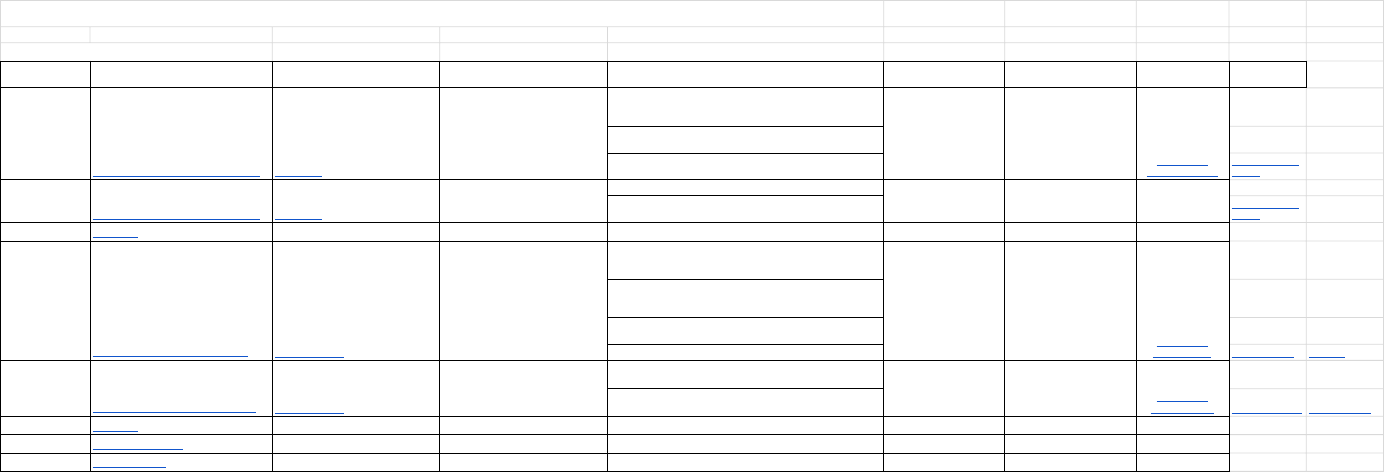
CED UNIT 8: INFERENCE FOR CATEGORICAL DATA: CHI-SQUARE
Chapter 12: Inference for Distributions and Relationships
Day Stats Medic
CED Topic
TPS Content Learning Targets Students will be able to …
Suggested Assignment
(MC bold)
Materials needed for in-
class Digital Resources
Digital
Resources
1
Chi-Square Goodness of Fit - Day 1
TOPIC 8.2
Chapter 12 Introduction, 12.1 Stating
Hypotheses, Comparing Observed and
Expected Counts: The Chi-Square Test
Statistic, The Chi-Square Distributions
and P-Values
· State appropriate hypotheses and compute the expected
counts and chi-square test statistic for a chi-square test for
goodness of fit.
1, 3, 5, 7 MMs
Chi-square
Goodness-of-Fit
· State and check the Random, 10%, and Large Counts
conditions for performing a chi-square test for goodness of fit.
· Calculate the degrees of freedom and P-value for a chi-
square test for goodness of fit.
Google Slides:
M&Ms
2
Chi-Square Goodness of Fit - Day 2
TOPIC 8.3
12.1 Carrying Out a Test
· Perform a chi-square test for goodness of fit.
9, 13, 19-22
· Conduct a follow-up analysis when the results of a chi-
square test are statistically significant.
Google Slides:
M&Ms
3
Quiz 12.1
4
Chi-Square Test of Homogeneity
TOPIC 8.4 - 8.6
12.2 Tests for Homogeneity: Stating
Hypotheses, Expected Counts and the
Chi-Square Test Statistic, Conditions
and P-Values; The Chi-Square Test for
Homogeneity
· State appropriate hypotheses and compute the expected
counts and chi-square test statistic for a chi-square test
based on data in a two-way table.
27, 29, 31, 33, 35 Gummy Bears (two brands)
Chi-square
Homogeneity
· State and check the Random, 10%, and Large Counts
conditions for a chi-square test based on data in a two-way
table.
· Calculate the degrees of freedom and P-value for a chi-
square test based on data in a two-way table.
· Perform a chi-square test for homogeneity. Google Slides Desmos
5
Chi-Square Test for Independence
TOPIC 8.5 - 8.6
12.2 Relationships Between Two
Categorical Variables, The Chi-Square
Test for Independence, Using Chi-
Square Tests Wisely
· Perform a chi-square test for independence.
41, 43, 47, 49, 51, 55-60
Chi-square
Independence· Choose the appropriate chi-square test in a given setting. Desmos Activity Google Slides
6
Quiz 12.2
65, 67, 69
7
Chapter 12 Review
Chapter 12 Review/ FRAPPY! 71, 73, 75
8
12.1 - 12.2 Test
Chapter 12 Test

CED UNIT 9: INFERENCE FOR QUANTITATIVE DATA: SLOPES
Chapter 12: Inference for Distributions and Relationships
Day Stats Medic
CED Topic
TPS Content Learning Targets Students will be able to …
Suggested Assignment
(MC bold)
Materials needed for in-
class Digital Resources
1
Sampling Distribution of Slopes
TOPIC 9.2
12.3 Sampling Distribution of b,
Conditions for Regression Inference
· Check the conditions for performing inference about the
slope of the population (true) regression line.
79, 83, 87-92
Seat location cards Google Slides
2
Confidence Intervals for Slope
TOPIC 9.2 - 9.3
12.3 Estimating the Parameters,
Constructing a Confidence Interval for
the Slope
· Interpret the values of a, b, s, and SEb in context, and
determine these values from computer output.
Chapter 12 Review
Exercises
Linear Regression t
Interval
· Construct and interpret a confidence interval for the slope
of the population (true) regression line. Google Slides
3
Significance Tests for Slope
TOPIC 9.4 - 9.5
12.3 Performing a Significance Test
for the Slope
· Perform a significance test about the slope of the
population (true) regression line.
Cumulative AP® Practice
Test 4
Linear Regression t
Test Google Slides
4
Quiz 12.3
